The cost of living crisis has had an impact on new vehicle sales, and that’s also true for motorcycles.
Dealers are selling fewer of the bigger, more expensive examples of late. Much of the action is therefore at the opposite end of the market, and the change in circumstances plays nicely into the hands of Royal Enfield.
The Indian firm is evidently the leader in the 250 to 650cc area and appeals to those who like retro styling; the type who might play records instead of CDs.
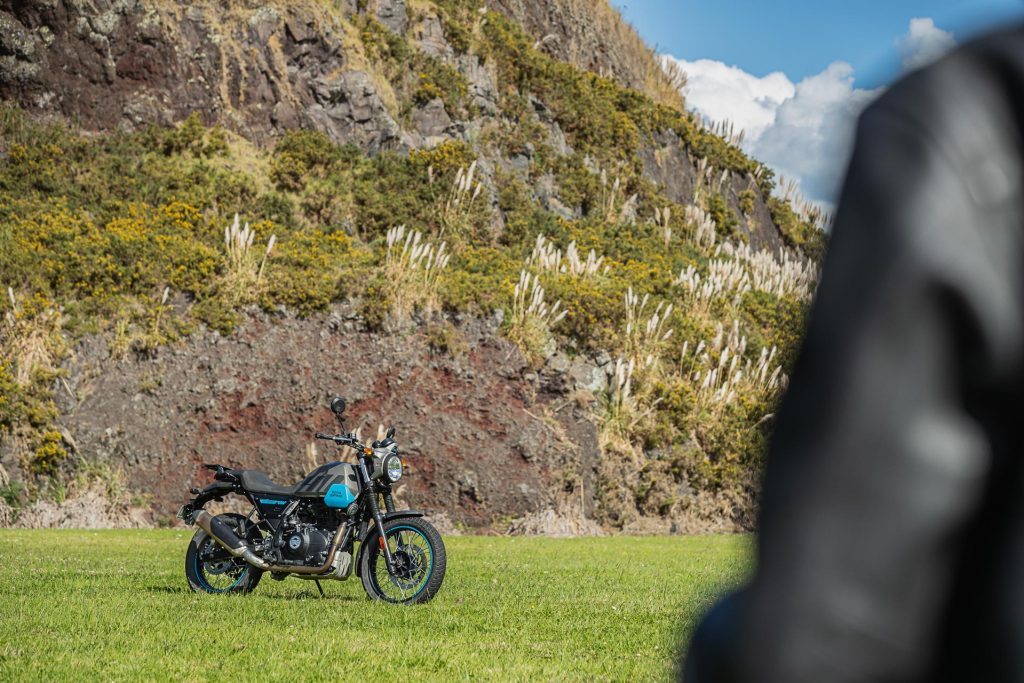
While it may look like an adventure machine, Royal Enfield’s Scram 411, based on the rugged Himalayan (and indeed with that moniker on its side) is more road-oriented than it would appear, wearing a 19-inch front wheel compared with a 21 you’d find on a true off-roader.
The former is typical of a scrambler and hence the abbreviated name. That drops the ground clearance 20mm to 200mm, still enough for a spot of adventure riding.
There’s a rugged bash plate, along with rubber gaiters to protect the forks during off-road riding.
And the wire spoked wheels look the part too.
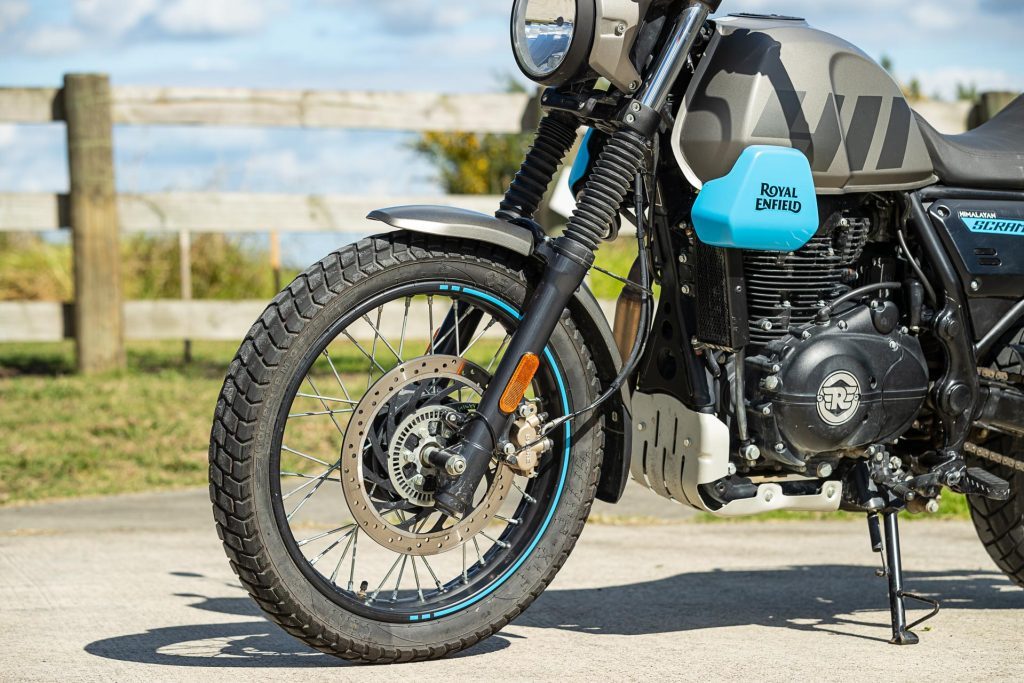
The Scram 411 utilises the same Harris performance frame and LS-410 engine as in the original Royal Enfield Himalayan but it is just in a more urban-focused funky form.
That means motivation is provided by a 411cc air-cooled single-cylinder long-stroke engine with a modest 18kW but it creates 32Nm of torque from around 4000rpm.
Not that you know when that hits because there’s no rev counter. The output is processed by a five-speed gearbox reaching the rear wheel by chain drive.
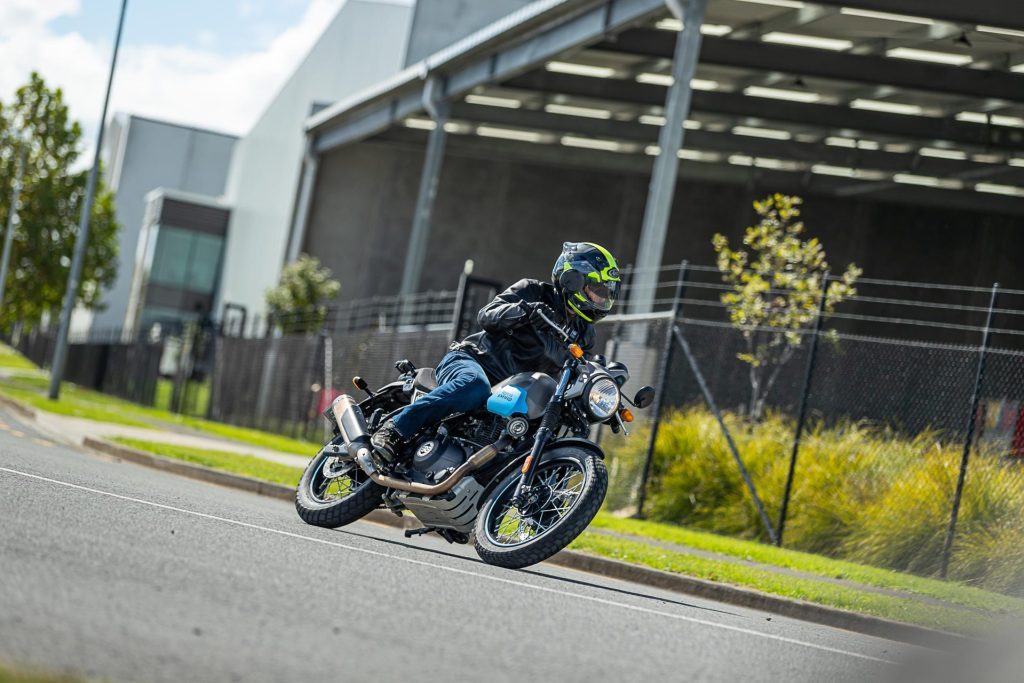
While the power output is hardly Herculean, the abundant torque means hills taken at 80-100km/h are flattened by the simple application of more right wrist. And you can handily hold speed through corners too, that stout Harris frame keeping things tidy.
A thicker single-piece seat for the Scram makes it just 5mm shorter on the inseam (seat height is 795mm) so it should be good for decent weekend rides, and a touch easier to throw a leg over.
A natural easy-going riding triangle helps with longer jaunts, as does mean fuel use of 4L/100km. With a 15L tank a range of 300-350km on the open road should be possible.
The ride quality is passable too, thanks to a bit of extra seat cushioning, though it’s best to bear down on the pegs when anticipating the bigger hits.
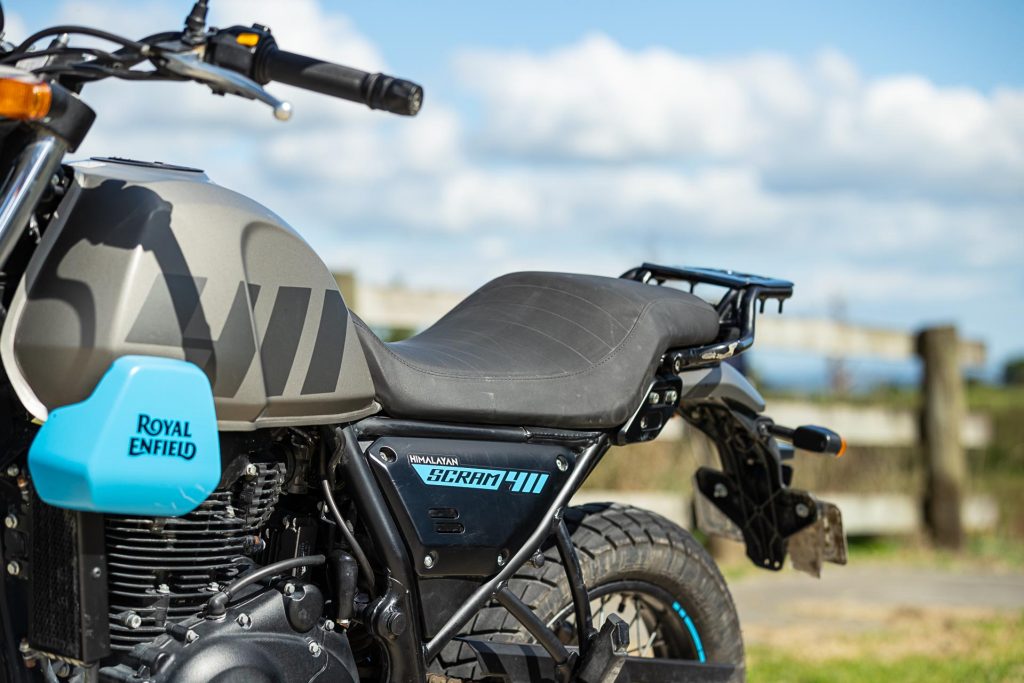
The 41mm unadjustable forks have 190mm of travel, while the monoshock offers 180mm, so some adventure riding is certainly possible with the Scram 411.
Dials are distinctly old school, with an analogue speedo, but there’s also a Tripper navigation pod that can display Google Maps directions once the RE phone app is activated.
However, that costs extra, atop the $8290 asking price.
There’s not much in the way of anything you might class as safety devices, ABS aside and this is not switchable.
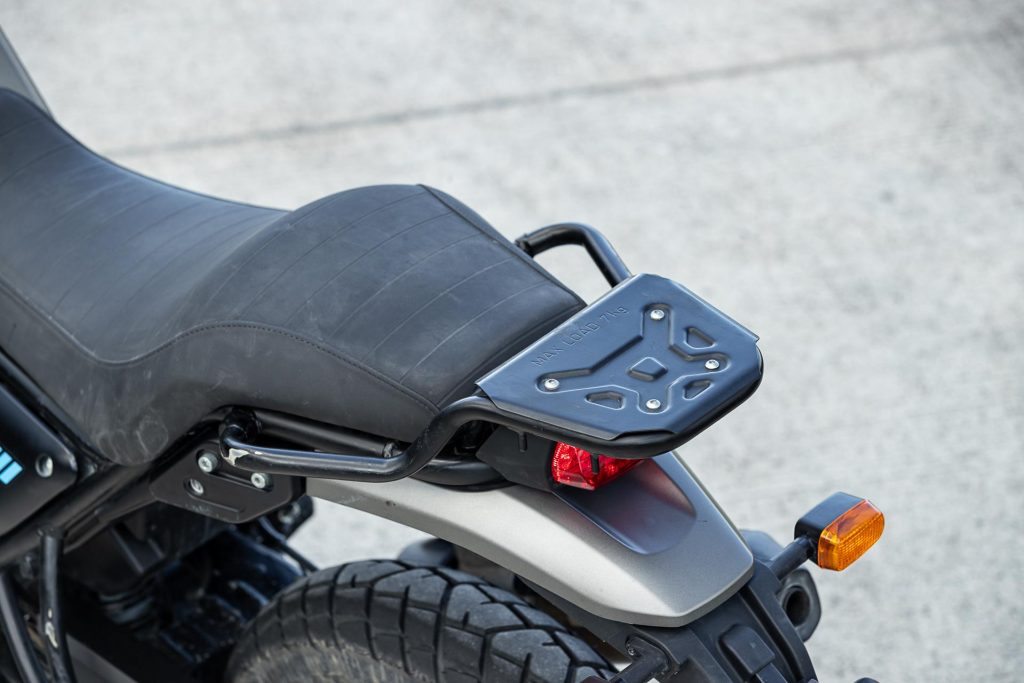
They say lightning never strikes twice in the same place but that’s actually not true.
Our first attempt at riding the Scram 411 lasted only a few minutes; the engine light came on and it lost power but I was able to make my way back home under its steadily diminishing power.
Turned out it had a throttle body issue that hadn’t quite been rectified properly. So imagine my surprise and shock when the engine light came on the second time we rode the bike almost a year later.
Fortunately there was no power loss (nor oil) so we rode on…gingerly. A bit further on we encountered some heifers roaming on the road so we powered off using the kill switch.
Once they’d been returned to greener pastures, lo and behold at start up the engine light extinguished, never to return. So just a killswitch glitch.
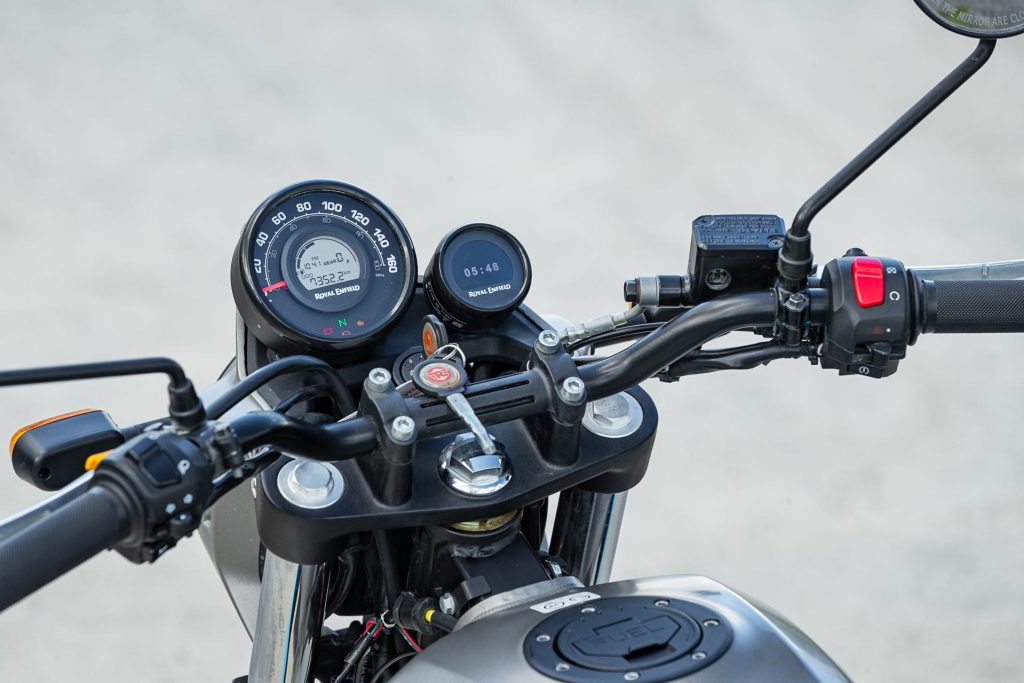
Performance is probably the last thing any potential buyers of this machine will be interested in. But for the record it takes 12sec to hit 100 and a bit under 20sec to run from 80 to 120km/h.
That’s not quite as quick (slow?) but is roughly what the Himalayan achieved, though this one was in need of a service.
Think of this bike then as more about enjoying the journey, seeing the big picture through which you’re riding. If it’s a genuine learner bike you might be after, this should prove about as unthreatening as any.
And yet it will do what you ask of it, within reason. If that means open road running at 100 or thereabouts, no problem. The mirrors are best up to about 80 and then the reflections blur.
Around 90km/h seemed the natural gait of the machine. However, peak torque seems to be around the 100km/h point in fifth, which is why it holds onto open road speeds up hills without much bother.
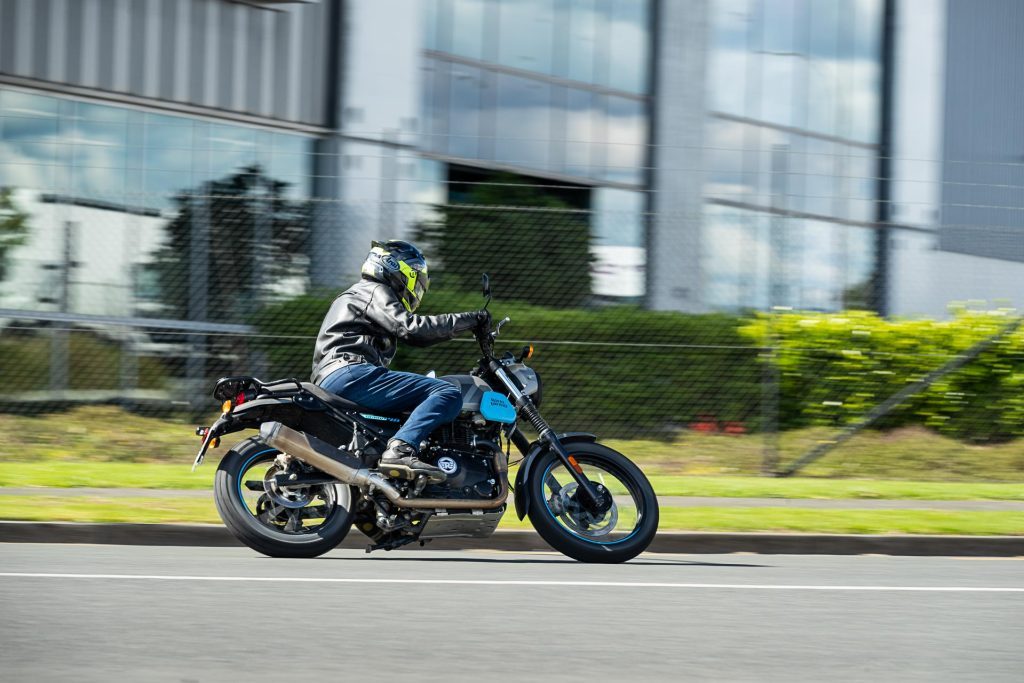
We never thought much of the brakes on the original Himalayan but this is better, and has ABS as standard.
As you’d expect, the best performance requires a fair old haul on the lever and a decent prod on the foot brake.
Another uptick with the Scram 411 is tyre performance, though our particular example had done an adventure trip around the country and was wearing a new Pirelli MT 90 on the rear, a 120/90-17.
Still, the rubber instills more cornering confidence than the original Himalayan could muster.
What potential owners should be aware of is that this goes equally well on tarmac so will make an easy and economical commuter for the five working days of the week.
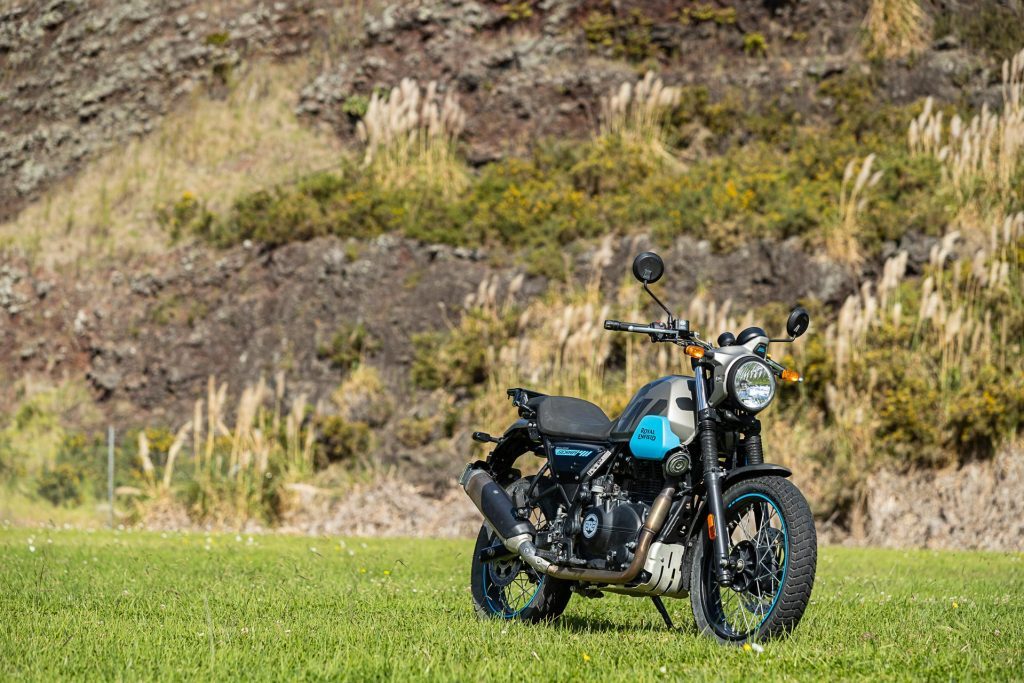
About the one caveat with the Scram 411 is its sheer lack of power; acceleration is modest and top speed is around 120km/h so if you need a bit more poke you’ll need to spend another couple of grand to get the much quicker KTM 390 Adventure.
Or perhaps await the arrival of the new Himalayan 450 due soon, kicking off at $9k or the CFMoto 450MT, available for just under $10k.
Meantime, if the budget doesn’t quite stretch to that, the Scram 411 is available at three different price points, and in seven different colour and decal combinations, all within $200 of each other ($NZ8290-$8490).
| Model | Royal Enfield Scram 411 |
| Price | $8,290 |
| Format | Air cooled / Fuel Injected / Single |
| Engine | 411cc |
| Max Power | 18kW @ 6500 rpm |
| Max Torque | 32 Nm @ 4250 rpm |
| Cylinder Head | SOHC / 2v |
| Gearbox | 5-speed |
| Drivetrain | Chain final drive |
| Front Suspension | 41mm forks, no adjustment |
| Rear Suspension | Monoshock, preload adjustable |
| Front Brakes | Twin-piston calipers, 300mm disc |
| Rear Brakes | Single-piston calipers, 240mm disc |
| Safety Systems | ABS |
| Tyre Size | F – 100/90R19 / R – 120/70R17 |
| Tyres | Ceat |
| Wheelbase | 1455mm |
| Seat Height | 795mm |
| Rake/Trail | 26.2 degrees / 104.6mm |
| Fuel Capacity | 15 L |
| Measured Weight | 185 kg |
| Weight Distribution | F – 87 kg / R – 95 kg |
This story first appeared in the May 2024 issue of NZ Autocar magazine.


